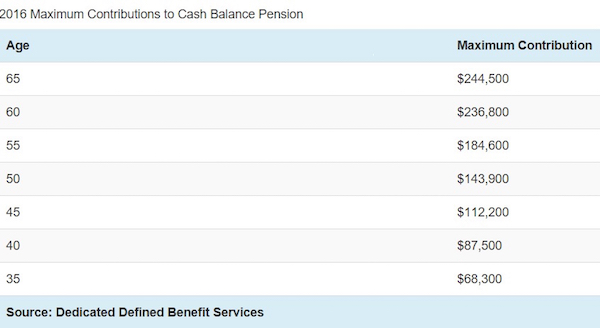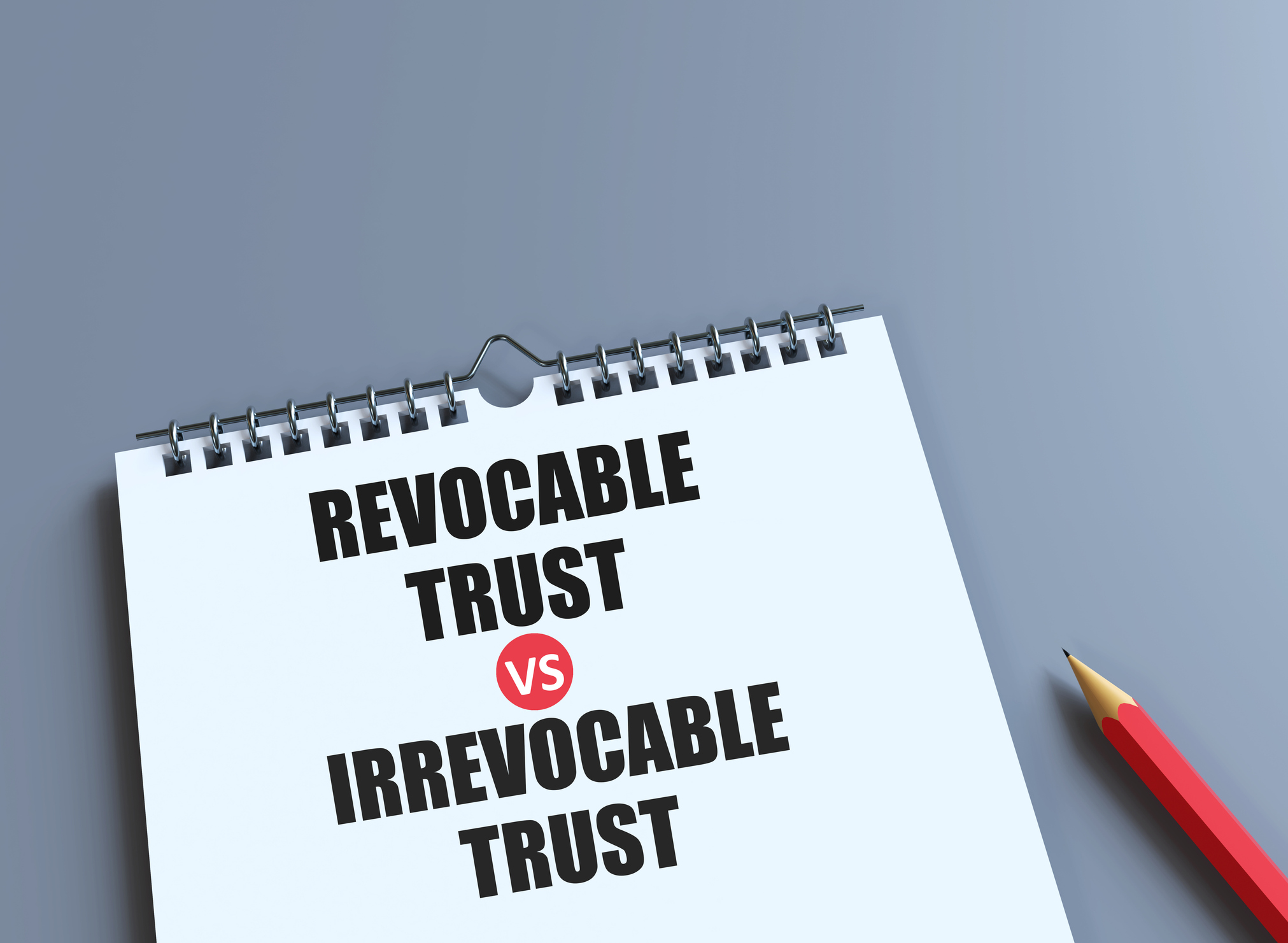How the Rich Can Save $100,000 Tax-Free for Retirement Every Year
Pensions are dead, right? Not if you are self-employed with cash to sock away.

Let me start by saying that I love the 401(k) plan. It’s the single best wealth accumulation vehicle available to the vast majority of Americans. At today’s contribution limits, you can defer up to $18,000 of income — and $24,000 if you’re 50 or older — tax free. And many companies offer corporate matches dollar for dollar (most companies match the first 20-60% you save.)
That’s great for middle-class Americans, and many can contribute the maximum allowed with a little bit of discipline. But if you have an annual income of $500,000 or more, that amounts to a paltry savings rate of less than 4%. Any savings above that amount would be subject to punishingly high taxes…and even the dreaded Obamacare surcharge.
Well, I have good news. If you earn a high income and own your own business (or are paid as a 1099 contractor), you have vastly superior savings options at your disposal. If done right, you can save well over $100,000 per year in tax-sheltered accounts.
From just $107.88 $24.99 for Kiplinger Personal Finance
Become a smarter, better informed investor. Subscribe from just $107.88 $24.99, plus get up to 4 Special Issues

Sign up for Kiplinger’s Free Newsletters
Profit and prosper with the best of expert advice on investing, taxes, retirement, personal finance and more - straight to your e-mail.
Profit and prosper with the best of expert advice - straight to your e-mail.
This strategy is designed for the self-employed, but it can also work if you get a paycheck but also earn additional income from a side business or additional contract income. A lot of doctors and consultants would fall under this umbrella.
We all know that the traditional defined-benefit pension is dead. The days when your employer guaranteed you an income for life are now something we read about mostly in history books.
Well, that might be true for corporate plans. But there is nothing stopping you from starting your pension for yourself and your spouse.
The One-Man Pension
The best retirement savings strategy is actually a combination of two separate vehicles:
1. An Individual 401(k) plan, which consists of regular salary deferral and additional profit sharing based on your company’s profit for the year.
2. A cash-balance, defined-benefit pension plan.
I’ll tackle the Individual (“Solo”) 401(k) plan first. Most investors consider a Solo 401(k) plan to be more or less interchangeable with a SEP IRA.
They’re wrong.
While both plans max out at $53,000 per year in contributions, the Solo 401(k) allows for front loading. Let’s look at an example. Let’s say your business earns $100,000 in net income. With a SEP IRA, you can contribute 20%, or $20,000, tax deferred. This is a profit-sharing contribution made on your behalf by your employer…which happens to be you.
With the Solo 401(k), you can make that same profit-sharing contribution of $20,000. But you can also defer $18,000 of salary, for a total of $38,000.
Of course, we’re talking about high-income earners, and both the Solo 401(k) and the SEP IRA max out at $53,000 on incomes of $265,000.
So, if you earn $265,000 or more, the SEP IRA and Solo 401(k) are interchangeable, right?
Wrong!
If you save via a Solo 401(k), you are also eligible to contribute to a defined-benefit plan. If you save via a SEP IRA, you cannot.
This brings me to the second prong of the retirement plan, the single-person defined-benefit plan.
Yes, you can actually make a traditional pension plan…for yourself. There are administrative fees involved, and you’ll want to hire a professional to draft the plan documents and monitor compliance. But doing all of this opens the door to massively increasing your retirement savings if you can afford it.
Annual contribution levels here depend on your age and other actuarial assumptions, but the chart below shows how they shake out. The contribution limits depend on two main variables: age and income. That’s very different from IRAs/401(k)s, so it takes some getting used to. These are sometimes (though not always -- see a list of exceptions here) insured by the Pension Benefit Guaranty Corporation.

Putting It All Together
Combining the Solo 401(k) with the cash-balance, defined-benefit plan is complicated, so I can’t stress enough the importance of hiring a knowledgeable pro to set it up correctly. But here are the basics.
Normally, you can contribute $18,000 in salary deferral and 20% of profits to a Solo 401(k) plan, up to a maximum of $53,000. But if you also contribute to a cash-balance pension plan, your profit-sharing percentage gets bumped from 20% to 6%. That effectively drops your $53,000 contribution to $33,900 if you’re under 50 and $39,900 if you’re 50 or older.
But here’s where it gets fun. If you’re 65 years old, your combined contribution to the Solo 401(k) and cash-balance pension is a whopping $284,400 ($244,500 cash balance + $39,900 401(k) plan). The numbers get smaller the younger you are, but at age 35 you can still contribute a not-too-shabby $102,200. (Breaking out the math, this is $18,000 in salary deferral, $15,900 in salary deferral at the maximum 6% rate, and $68,300 in defined-benefit contributions.)
Is There a Downside?
So, stashing away hundreds of thousands of dollars per year sounds pretty great, right? What’s the catch?
Believe it or not, there really isn’t one, assuming you earn a high enough income. This isn’t for everyone. You have to own your own business (or earn significant contract income), and you need to have a high income for this to make sense. If the business has any employees, contributions must also be made for them, which can be very expensive. And there are other costs. Expect to pay $2,000 to $3,000 in administrative expenses. But if you fall under this umbrella -- and if you’re eager to shield some of your savings from the tax man -- this is the best combination I’ve seen.
Charles Lewis Sizemore, CFA, is chief investment officer of the investment firm Sizemore Capital Management and the author of the Sizemore Insights blog.
Profit and prosper with the best of Kiplinger's advice on investing, taxes, retirement, personal finance and much more. Delivered daily. Enter your email in the box and click Sign Me Up.

Charles Lewis Sizemore, CFA is the Chief Investment Officer of Sizemore Capital Management LLC, a registered investment advisor based in Dallas, Texas. Charles is a frequent guest on CNBC, Bloomberg TV and Fox Business News, has been quoted in Barron's Magazine, The Wall Street Journal, and The Washington Post and is a frequent contributor to Yahoo Finance, Forbes Moneybuilder, GuruFocus, MarketWatch and InvestorPlace.com.
-
 3 Major Changes to the Charitable Deduction in 2026
3 Major Changes to the Charitable Deduction in 2026Tax Breaks About 144 million Americans may qualify for the 2026 universal charity deduction, while high earners face new IRS limits. Here's what to know.
-
 Where to Stash Cash as Yields Fall, According to Advisers
Where to Stash Cash as Yields Fall, According to AdvisersYour best options depend on how soon you'll need the money and your tolerance for risk.
-
 Control vs Protection Quiz: Which Trust Do You Need?
Control vs Protection Quiz: Which Trust Do You Need?Quiz Take this simple quiz to discover whether a revocable or irrevocable trust should be the cornerstone of your estate plan.
-
 I'm a Financial Pro: You Really Can Make New Year's Money Resolutions That Stick (and Just Smile as Quitter's Day Goes By)
I'm a Financial Pro: You Really Can Make New Year's Money Resolutions That Stick (and Just Smile as Quitter's Day Goes By)The secret to keeping your New Year's financial resolutions? Just make your savings and retirement contributions 100% automatic.
-
 Domestic vs Offshore Asset Protection Trusts: A Basic Guide From an Attorney
Domestic vs Offshore Asset Protection Trusts: A Basic Guide From an AttorneyLearn the difference between domestic asset protection trusts and foreign or offshore asset protection trusts to help you decide what might work best for you.
-
 Now That You've Built Your Estate Planning Playbook, It's Time to Put It to Work
Now That You've Built Your Estate Planning Playbook, It's Time to Put It to WorkYou need to share details with your family (including passwords and document locations) and stay focused on keeping your plan up to date.
-
 I'm a Wealth Adviser: These 10 Strategies Can Help Women Prepare for Their Impending Financial Power
I'm a Wealth Adviser: These 10 Strategies Can Help Women Prepare for Their Impending Financial PowerAs women gain wealth and influence, being proactive about financial planning is essential to address longevity and close gaps in confidence and caregiving.
-
 I'm a Financial Planning Pro: This Is How You Can Stop These 5 Risks From Wrecking Your Retirement
I'm a Financial Planning Pro: This Is How You Can Stop These 5 Risks From Wrecking Your RetirementYour retirement could be jeopardized if you ignore the risks you'll face later in life. From inflation to market volatility, here's what to prepare for.
-
 Are You Hesitating to Spend Money You've Spent Years Saving? Here's How to Get Over It, From a Financial Adviser
Are You Hesitating to Spend Money You've Spent Years Saving? Here's How to Get Over It, From a Financial AdviserEven when your financial plan says you're ready for a big move, it's normal to hesitate — but haven't you earned the right to trust your plan (and yourself)?
-
 Time to Close the Books on 2025: Don't Start the New Year Without First Making These Money Moves
Time to Close the Books on 2025: Don't Start the New Year Without First Making These Money MovesAs 2025 draws to a close, take time to review your finances, maximize tax efficiency and align your goals for 2026 with the changing financial landscape.
-
 Is Fear Blocking Your Desire to Retire Abroad? What to Know to Turn Fear Into Freedom
Is Fear Blocking Your Desire to Retire Abroad? What to Know to Turn Fear Into FreedomCareful planning encompassing location, income, health care and visa paperwork can make it all manageable. A financial planner lays it all out.